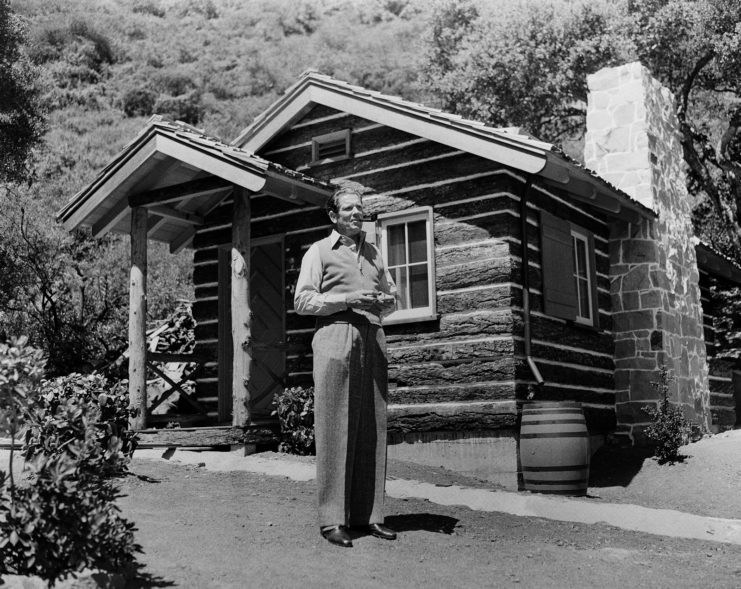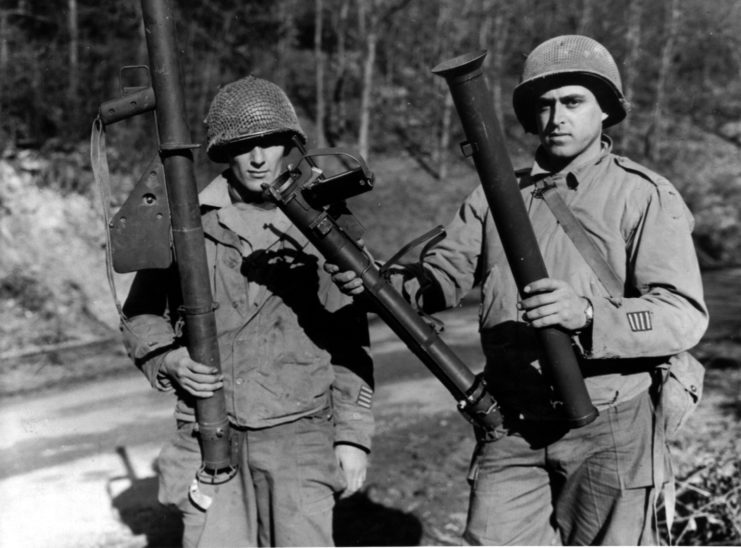The word bazooka is synonymous with shoulder-fired anti-tank weaponry today, but this strange term actually dates all the way back to WWI, when it was used to identify a much more peaceful, yet still-tubular object.
Man-portable anti-tank weapons

As long as there have been tanks, engineers have come up with ways to destroy them. To begin with, the most effective and available method was with large-caliber guns that were heavy, slow to reload, and difficult to transport.
When troops faced tanks without such weapons, they had essentially no chance of stopping them, aside from relying on tank traps and obstacles. Early attempts to combat tanks saw German troops being armed with K bullets, which were a type of armor-piercing ammunition. When these became ineffective the Germans then introduced the Mauser T-Gewehr, the world’s first anti-tank rifle.
However, as tanks kept improving and their armor became thicker, more capable weapons were needed.
US engineer and professor Dr. Robert H. Goddard designed the early ancestor of the bazooka during WWI, but the development of this promising weapon was canceled when the war ended. The design was revived in the early 1940s under the guidance of Army Colonel Leslie Skinner. He assigned Lieutenant Edward Uhl to the task of delivering the M10 shaped-charge grenade to the target.
“I was walking by this scrap pile, and there was a tube that … happened to be the same size as the grenade that we were turning into a rocket,” Uhl said. “I said ‘That’s the answer!’ Put the tube on a soldier’s shoulder with the rocket inside, and away it goes.”
This resulted in the overall design of the M1 “Bazooka.” A tube that fired a rocket-powered high explosive anti-tank (HEAT) projectile up to a maximum range of about 300 meters. The weapon was able to penetrate between 75 and 100 mm of armor.
Bob Burns’ bazooka

Bob Burns was a musical comedian from America who joined the US Marine Corps during WWI. He was part of the 11th Marine Regiment, which was supposed to be a light artillery regiment but went into action as an infantry unit.
As they were sent into Europe in the final year of WWI, the 11th Marine Regiment did not see any action. This was no problem for Sergeant Burns though, as he was had become the leader of the Marine Corps’ jazz band in Europe.
Before joining the Marines, Burns had been in a band. While practicing one evening, Burns picked up a length of pipe and blew into it, producing a particular sound. He made some additions to the pipe and named it the “bazooka.”
Burns created the name from the word bazoo, meaning mouth, which is suspected to originate from the Dutch word bazuin, meaning trumpet.
With plenty of spare time, Burns was able to recreate his old musical instrument. This time it was constructed from a stovepipe and a whiskey funnel.
Burns would sometimes play his bazooka in the Corps band. In 1919, Burns and his instrument gained popularity when they were featured in a New York Evening Telegram article. In it, he spoke about his activities in the Marine Corps band.
“We play everything from Berlin (Irving) to Mr. Beethoven and will tackle anything except a funeral march,” Burns said. “The outfit consists of two violins, a banjo, piano, drum, and the bazooka.”
The M1 “Bazooka”

Fast forward to 1942, and Colonel Skinner and Lieutenant Uhl’s rocket launcher was undergoing testing at Aberdeen Proving Grounds. One of those in attendance described the strange-looking device by saying it “looks like Bob Burns’ bazooka.”
After this, the name stuck, and the M1 “Bazooka” was born.
The weapon gave infantrymen a fighting chance against the newer heavily armored tanks the Allies were starting to face. However, this bazooka quickly fell into Nazi hands, who were able to reverse engineer it. This version was given the fearsome name “Panzerschreck,” and featured a number of modifications compared to the US weapon.

The bazooka was continually improved, reaching its peak with the M20 “Super Bazooka,” although this weapon missed WWII. The super bazooka was used in the Vietnam War but was eventually replaced by recoilless rifles and the M72 LAW.
More From Us: The “Bazooka” and Its Evolution in Photos
Today, even though the bazooka is no longer in use with the US, its name lives on as a generic term for any shoulder-fired rocket launcher.
